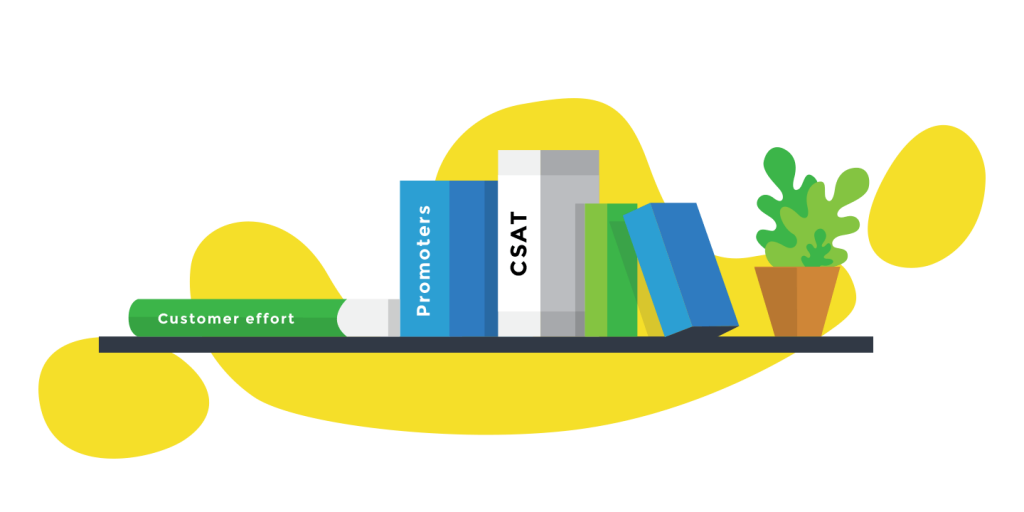If you’re familiar with the expression “can’t see the wood for the trees”, then you already know that being too focussed with your analysis is a surefire way to miss overall trends.
I understand the temptation to get extremely in-depth when looking at the stages of customer interaction with your brand that produce the most notable results. Your top landing page is a big conversion-driver, so you want to maximize the polish — a slight improvement could translate to a significant bump in your bottom line.
But you rapidly run up against the ever-present problem of diminishing returns. The more you improve something, the fewer solvable issues remain, and the longer it takes to identify them.
Then it’s harder and costlier to address them. Soon enough, you realize that it’s no longer cost-effective to make any changes.
So you shift your perspective up a step and look at your funnels. By finding and improving the most basic issues, you can again achieve a meaningful improvement — but even that isn’t enough. You’re still only looking at interaction with your brand in particular.
Think about it this way:
What use can a doctor be if they can only spot (and thus, only address) injuries or illnesses suffered during an appointment? They may only have that appointment time to provide treatment, but they need much broader context to reach an accurate diagnosis.
Similarly, this kind of thinking — which we’ll call siloed thinking here, because it’s fundamentally isolated — is far from ideal for improving UX. But how bad is it? Let’s expand on these thoughts in taking a deeper look at exactly why siloed thinking is so bad for customer happiness.
 Diminishing returns kill operational efficiency
Diminishing returns kill operational efficiency
Even if your company is an industry juggernaut with bottomless pockets, you don’t have unlimited time to spend on ceaselessly improving isolated elements of your CX.
And make no mistake: when you keep looking for things to improve, you will keep finding them, regardless of whether they’re meaningful or even legitimate.
To begin with, you’ll likely find basic problems that are entirely worth rectifying. A missing link here, a code error there. Perhaps there’ll be a chunk of copy that can quickly be rewritten to be many times more compelling. And when you see results in your analytics, you’ll establish a link between activity and reward — improve that section, make more sales.
But after a while, you’ll have plucked all the low-hanging fruit, and you might even find that it accounts for everything wrong with the page.
What do you do then?
If you’re being narrow-minded, you’ll just carry on making changes. After all, there’s no such thing as a perfect page — perhaps an alteration to the background color would prove useful.
Because the section you’re looking at is so important, you will continue to prioritize it over other elements of the overall customer journey, even though there’s little you can do to it. This is not only ineffective but also risky.
Envision a bodybuilder spending all their time working on their biceps.
Not only can biceps only get so big, but the more you stress them in an effort to grow them, the more likely you’ll be to injure them and leave them weaker than before.
Why does your operational efficiency matter for customer happiness, you might ask? Because all that wasted effort could be going towards something useful that your customers will actually notice. An efficient operation has more time to gather feedback from customers, engage with them, and move in a positive direction for everyone.
 A chain is only as strong as its weakest link
A chain is only as strong as its weakest link
Think about that bodybuilder again:
Imagine their biceps to be staggeringly enormous: biceps the size of formidable thighs. Then imagine them entering a bodybuilding competition, posing with wildly-disproportionate arms and the rest of their body looking comparatively emaciated. They wouldn’t contend. They’d likely be laughed out of the room. That’s because competitive bodybuilding is about overall results.
Similarly, a consumer’s digital journey moves from step to step, with each one relying on the last to retain the user’s attention and push them ahead.
If steps 2 through 10 are extremely effective but step 1 is disastrous, then overall conversion will be minimal. It’s only when you add up the success of each and every segment that you get an idea of how the system as a whole is operating, and your customers won’t fixate on specific segments when forming their opinions of you.
They’ll remember their general impressions.
Siloed thinking limits your perspective, keeping you stuck on whichever parts you originally deemed to be the most important, but every part has an important role to play. Consumers want brands to be consistent and reliable, not erratic. Leave just one weak link in your process chain and you’ll severely undermine the entire thing.
 Opinions are (almost) always nuanced
Opinions are (almost) always nuanced
Suppose that you reach out to a customer for some feedback on how they view you, and they give you an 8 out of 10. That’s a strong score, so it’s reason to celebrate, yes? But then you ask another customer and receive a 3. Wildly different opinions that you need to unpack. And in ideal circumstances, those customers will tell you exactly how they arrived at those scores, but that isn’t tremendously likely.
Here’s why:
- Customers are rarely generous with their time. If someone has taken the time to score your service, that’s probably the best you’ll get from them.
- Customers don’t always know how they formed their opinions. It’s perfectly possible for someone to dislike you without understanding why. (More on this later.)
As such, the onus is on you to figure out what the scores mean through investigating context and using whatever snippets of information you do have access to. But imagine the kind of unclear comment you might get for a negative review of a digital system: “couldn’t press button”. Well, what button? Where?
If you’ve been concentrating on the main pages of your customer journey, you might well struggle to understand feedback, because it might concern other things. Maybe the button the customer is talking about was in a marketing email you sent and forgot about. Maybe it wasn’t even on your page.
It could be that a backlink to you on another site isn’t working correctly, and the customer mistakenly believed it to be your mistake.
Do you see why you need a broader understanding of the customer journey?
The better you know it, the better a chance you’ll have of being able to figure out where customers are becoming irritated. And even tiny issues can prove highly damaging through bad timing or simply aggregating to wear away goodwill.
If you don’t know exactly how you earned your positive customer happiness scores — or where you fell short to warrant your negative customer happiness scores — then you can’t work towards replicating the former and eliminating the latter.
 It underestimates the importance of wider context
It underestimates the importance of wider context
I just mentioned tiny issues wearing away goodwill, and I want to expand on that by touching upon the role of general context in the customer journey. Not all opinions of a brand can be easily attributed to specific high-level elements in your CX. Some are results of various factors that are heavily affected by external experiences — let’s look at an example.
Imagine that you need to find a simple SaaS design tool to create some graphics for social media, and you pick whichever result comes up first on Google. You give it a try, realize that it isn’t what you’re looking for, and move on to the second result. How will you perceive that tool?
Well, regardless of whether you’re aware of it, you’ll be comparing it to the first tool. If it offers a great feature but it’s essentially the same as a feature the first offered, you won’t be impressed. If you notice right away that it does something worse, you might leave immediately: if it’s not as good as the tool you rejected, it’s clearly not what you need.
Do you see the flaws in that reasoning?
For all you know, that second tool pioneered that great feature, only to see it copied by the first tool. And despite doing at least one thing worse, the second tool might otherwise be absolutely perfect for your requirements.
Now imagine that you head up CX design for the company that produces that second tool. What are you missing? You’re missing the context of where your tool fits into the average customer journey, failing to understand how much of your traffic comes from people who have already looked at your competitor.
To address this, you’d need to rework your website content to emphasize difference. By providing something stylistically fresh, you could achieve a more favorable comparison with the top result, ultimately winning you more conversions and leaving your customers happier.
Why will they be happier? Because your brand will feel less like a second-choice version of another and more like a distinct entity — and people want to feel that there’s something special about the brands they most fervently support.
By all means take inspiration from big brands, or even get your ideas from businesses for sale (marketplaces are great for at-a-glance UX variety), but you must ultimately go in a fresh direction to stand out from the crowd.
 Why you should think bigger
Why you should think bigger
You want to make your customers happy (that’s how you develop brand advocates) and to do it you need to understand them. Don’t just look beyond specific steps in your customer journey — look beyond your customer journey altogether.
Look at everything that might be delighting or frustrating your prospective customers before they reach you. Think about everything that might help or hinder your customers after they’ve converted and gone elsewhere.
Only by adopting a holistic approach to customer happiness can you maximize your results and ensure that you’re efficiently distributing your resources. So what are you waiting for? Get your head out of the silo and open your mind: the results will follow.










